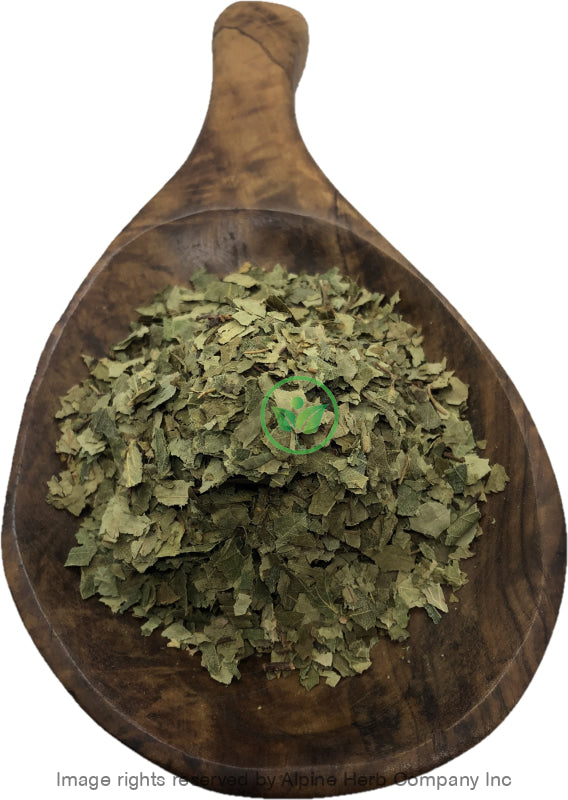Birch Leaves Cut Alpine Herb Company Inc.
$ 7,99 $ 4,79
Botanical Name: Betula alba
Common Name:
- English: Common Birch
- Also, known as: White Birch, Cherry Birch, Bereza, Black Birch, Spice Birch, Berke, Bouleau, Sweet Birch, Mountain Mahogany
Habitat: Europe, Northern Asia
Origin: Poland
Harvested: Wild
Parts Used: Leaves
General Information:
Birch is one of the most useful, as well as one of the most graceful trees which has been known as the ‘Giving Tree’ and called the oldest tree in Britain. Throughout history, it has played a huge roll in humans and in the animal world.
Birch is a medium size, an eye-catching tree grows up to 40-60 ft tall. The trunk of this tree is slender and about 35-40 cm in diameter. The bark of this tree is brown, golden-brown, white or yellow, normally smooth in beginning but later this turns to white as a result of papery tissue developing on the surface and peeling off in flakes until the tree gets quite large. The white papery part of the bark is separable into thin layers. This characteristic employed as a substitute for oiled paper and applied to various economical uses. The alternate leaves are simple, wedged-shaped toothed and bright green in color, with pleasant in odor and bitter in taste. Leaves are collected in early summer and in spring.
How to use:
Hot Infusion:
The basic method for dried herbs and flower is, take 2-3 tablespoons of dried herb in a cup or teapot. Pour hot water over it and cover it with lid for 10-30 minutes. Hot water is needed to draw out the antioxidants, enzymes, vitamins, flavonoids and volatile oils from the botanicals. Strain and squeeze out as much as liquid as possible and enjoy!
Tips:
- You can sweeten your herbal tea with bit of honey, natural fruit juice, stevia leaves powder and or licorice root powder.
- You can make ice cubes or pops by freezing tea in ice tray or pop molds.
Precautions:
You should consult with a qualified healthcare practitioner before using any herbal products, particularly if you are pregnant, nursing, or on any medications.
All information on this website is for educational purpose ONLY
This information has not been evaluated by Health Canada.
This information is not intended to diagnose, treat, cure, or prevent any disease.
| Unit Size | 100g, 200g, 400g, 1kg |
|---|
Prompt shipping and expert packing
Thanks to our longstanding association with UPS FedEx DHL as well as other leading global carriers, we can offer a variety shipping options. Our warehouse staff is highly trained and will be able to pack your goods in accordance with our precise and exact specifications. Your items will go through an exhaustive examination before they will be securely packaged before being delivered. We ship to hundreds of thousands of customers daily in different countries. This is a sign of our determination to become the largest online retailer worldwide. Warehouses and distribution centers are located throughout Europe as well as in the USA.
Note that orders containing multiple items are processed according to the particular item.
We will thoroughly inspect all items ordered before shipping. Most orders are shipped within 48 hours. The delivery time will be between 3 and 7 working days.
Returns
The stock market is always changing. It's not entirely managed by us since we're involved with several entities, including the factory and the storage. Therefore, the actual inventory could fluctuate at any moment. Please be aware that it is possible that your order could be out of stock after you've placed your order.
Our policy lasts for 30 days. If it's been more than 30 days since the date you purchased your item We're sorry to say that we can't offer you a full exchange or refund.
You can only return a product if it is unused and still in the same state as when you received it. The item should be in the original packaging.


































